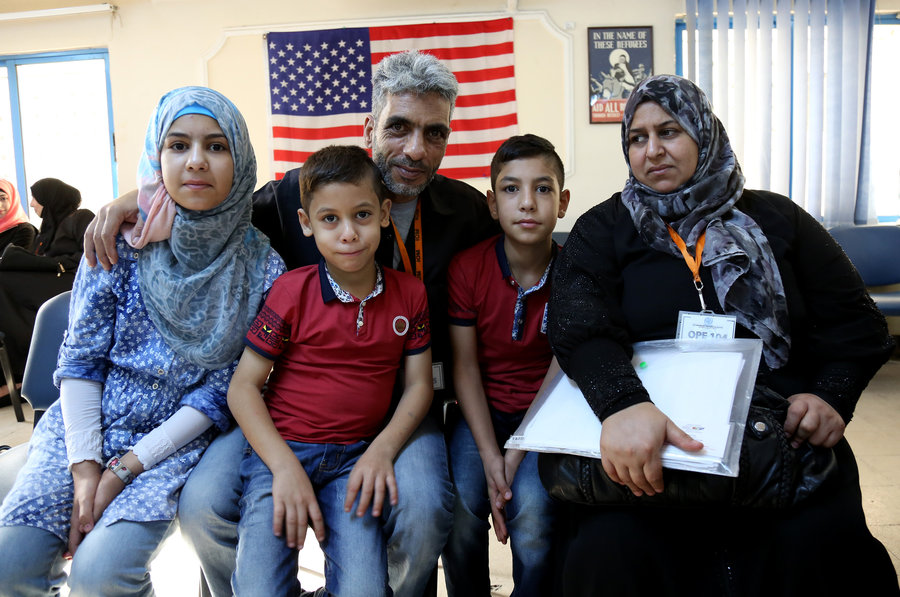From Refugee to Resident: The Vetting Process
February 28, 2017
In the wake of the execution and rollback of President Trump’s executive order banning people from entering the United States if they came from a list of seven countries (Libya, Syria, Iran, Sudan, Somalia, and Yemen), people are wondering where people who are refugees and immigrants stand on their ability to come into the country. One of Trump’s campaign promises was to “tighten up the borders” and use “extreme vetting” before allowing anyone to enter, in an effort to curb the effects of terrorism.
At his post-inauguration rally in Melbourne, FL, Trump falsly said to his crowd, “We’ve allowed thousands and thousands of people into our country and there was no way to vet those people. There was no documentation. There was no nothing. So we’re going to keep our country safe.”
There is a special system for allowing immigrants into the country, especially refugees, set up by the State Department. According to the guidelines, refugees begin by applying for resettlement with the U.S. or the United Nations refugee agency.
“This information is transferred to a Department of State- funded Resettlement Support Center (RSC). The RSC conducts an in-depth interview with the applicant, enters the applicant’s documentation into the Department of State’s Worldwide Refugee Admission Processing System (WRAPS), cross- references and verifies the data, and sends the information necessary to conduct a background check to other U.S. agencies,” the guidelines said.
Following this first step, applicants are screened by every major U.S. security agency, including the FBI, Department of Defense, Department of State, Department of Homeland Security, and the intelligence community.
“Refugees are screened more carefully than any other type of traveler to the U.S.,” according to the State Department.
The next step is an in-person interview with a trained DHS agent in the host country. If any information discrepancies occur, the applicant is put on hold. Next, biometric fingerprint checks are done and cross-referenced to the databases in the aforementioned agencies. If any issues come up, the case is denied.
Then, applicants who have passed on will take a course in American culture and traditions, as well as undergo a medical check to “identify diseases of public health significance.”
The last steps before arrival are a review by a resettlement agency to see where the applicant will go. Then, before boarding a plane, the applicant is reviewed by U.S. Customs & Border Control and the TSA for security concerns. If there are none, the applicant moves forward.
Finally, refugees are welcomed into the United States by resettlement agencies who help them begin their new lives. In 2016, the U.S. accepted 84,995 refugees from around the world.
Abdulwahab Abulgansem is a University of New Haven graduate student studying engineering management. He came to the United States from Libya in 2014 to complete his studies after getting a scholarship for college in his home country.
Since 2011, when the war began in Libya, there has not been an American embassy in the country, so Abulgansem was forced to go to another country with an American embassy to file an application to come to the U.S. He had a friend in Los Angeles who was able to send him the application.
Since he is not a refugee, Abulgansem’s process was different than the one previously outlined by the State Department, but has many of the same parts. He applied for an F-1 (student) Visa at the embassy in Malta (an island south of Sicily and north of Libya).
To get the Visa, he did a short interview where they asked what his intentions were and to verify his information. He said it “wasn’t that hard” to obtain his travel Visa and that the routine was straightforward. He added that his application to get a green card was also fairly easy, going through similar processes here in the U.S. as he did with his Visa.
According to the Integrated Refugee and Immigrant Services, approximately 420 refugees settled in New Haven in 2016 from countries including The Democratic Republic of the Congo, Afghanistan, Iraq, and Syria.
“Welcoming persecuted people from other countries is an ancient and universal custom. In the United States, it is our most noble tradition,” IRIS’s website says.
Libya, where Abulgansem is originally from, is one of the seven countries affected by President Trump’s travel ban. He said he was upset when he found out about it and thought it was “unbelievable.”
“I heard the news and I thought it was fake news,” he said.
Abulgansem had planned a trip to go home to see his family over the summer. However, he has since cancelled the trip, saying that it isn’t worth the risk.

